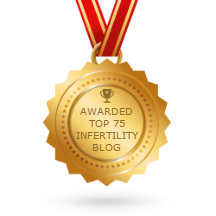
Every woman faces some or the other risk of having an acute / chronic breast problem depending on the age, hormone levels, and the medications. While some breast diseases reveal their presence through visible symptoms like a mild pain, rash, lump, bumps, fattiness or even discharge, there are many more diseases that are far more dangerous, only because of their potential growth and risks.
The most breast changes that should prompt you to take immediate medical advice are:
- Fibrocystic disease
- Fibroadenoma
- Breast Cyst
- Breast Cancer
- Breast Abscess
Fibrocystic breast disease
It is commonly known as fibrocystic breasts or fibrocystic change, which is a noncancerous condition in which the breasts feel lumpy. Fibrocystic breasts are not dangerous but can cause discomfort for some women. More than half of the women will develop fibrocystic breast disease at some point in their lives. Many women with fibrocystic breasts will not have any associated symptoms.
Causes
The breast tissue modifies in response to the hormones made by the ovaries. In the case of fibrocystic breasts, the changes may be more prominent in response to these hormones, which results in swelling and tender or painful breast lumps these symptoms occur just before the menstruation cycle.
Treatment
Generally, women with fibrocystic changes and without troublesome symptoms do not need any treatment, but they must be watched closely. If mild discomfort over-the-counter pain relievers can be used.
Fibroadenoma – Breast Disease
Fibroadenoma is a noncancerous tumour which is commonly found in women under the age of 30 years. This tumour consists of breast tissues, and mostly women have only one tumour but a few women can have multiple lumps it either occurs in one or both breasts.
Causes
The exact cause of fibroadenomas is not known. Hormones such as estrogen may play a part in the growth and development of the tumors. Taking oral contraceptives before the age of 20 can have a higher risk of developing fibroadenomas. Also these tumors may grow, particularly during pregnancy and they often get smaller during menopause.
Symptoms
Lumps may be easily moveable under the skin; they are rubbery, painless and lumps have smooth with well-defined borders
Treatment
Many doctors recommend removing fibroadenomas, especially if they keep growing. It’s important for women who have fibroadenomas to have breast exams regularly to make sure they’re not growing.
Breast cyst
A breast cyst is a frequent cause of breast lump in the woman in their late 40’s. An ultrasound scan is most helpful as it can readily distinguish between a cyst and a solid lump.
Causes
Doctors believe that this cyst is caused as a result of breast involution. It might start in a woman past her reproductive period, leading to degeneration of her fibro-glandular tissue. This results in the formation of spaces which form cysts when filled with fluid. These cysts are generally multiple and vary from small to big in size(less than 1 cm or greater than 2 cm in diameter)
Symptoms
They are firm, and their margins are not well defined as compared to fibroadenoma.
Treatment
The treatment of choice remains needle aspiration. For non-palpable cysts, an ultrasound scan is used to guide the needle aspiration.
Breast Abscess
Causes
This happens mostly in lactating women. The organism, commonly Staphylococcus Aureus, enters via the cracks in the nipple and infection quickly spreads as milk is a good medium to culture. An episode of inflammation results before the formation of the abscess. It is important to treat the initial phase of the abscess formation to avoid spreading of the infection.
Symptoms
The patient with a lactation inflammation has a painful swelling it may become red, and warm to the touch in one segment of the breast within the first couple of weeks of breastfeeding. This may be accompanied by fever.
Treatment
Antibiotics are given to treat Mastitis. In some cases, a breast abscess may form which is treated by draining the pus, either by surgery or by using a needle.
Breast Cancer
The majority of breast lumps encountered in clinical practice (80%) are benign. It mainly occurs to women about the age of 50 years, but young women and rarely men can also get breast cancer. If unattended breast cancer can spread to other parts of the body.
Causes
Breast cancer begins when cells in the breast start to grow abnormally. These cells normally form a tumor that can be seen on an x-ray, or a lump can be felt. Most breast cancers begin in the ducts that carry milk to the nipple. Some begin in the glands that produce breast milk.
Symptoms
Breast cancer can have several symptoms, but the first noticeable symptom is generally a lump.
Most breast lumps are not cancerous, but it’s always advisable to get them checked by your doctor. You should also consult your doctor if you observe any of the following:
- A change in the size or shape of one or both breasts
- Discharge from either of your nipples
- A lump or swelling in either of your armpits
- Dimpling on the skin of your breasts
- A rash on or around your nipple
- A change in the appearance of your nipple, such as becoming sunken into your breast
- Breast pain isn’t generally a symptom of breast cancer.
Treatment
Breast cancer is treated using a combination of surgery, chemotherapy, and radiotherapy. Surgery is generally considered as the first choice of treatment, followed by chemotherapy or radiotherapy.
The type of surgery will depend upon the type of breast cancer. The doctor will discuss and guide the best treatment plan.
Post-Operation Care
Always follow your doctor’s specific instructions for care after your operation.
- Any incisions should be kept clean and dry for at least a week after surgery.
- Do not indulge in heavy work that will create a pressure or indulge in swimming until your doctor advice you.
- Avoid sleeping on your stomach
- Use a special bra that will hold the bandages in place after surgery
- Get the regular dressing done by your doctor
- Follow the medications prescribed by the doctor regularly
Why Us
At ShrikhandeIVF, we are dedicated to finding breast related diseases at an early stage, when it is easier to treat. Our experienced radiologists offer a variety of breast imaging technologies, including advanced imaging such as 3-D mammography and automated whole breast ultrasound. If Breast cancer is suspected or found, our expert breast pathologists are highly skilled at assessing the breast cancer type, which guides breast cancer treatment. For women who may have a genetic risk for breast cancer, our doctors provide genetic counselling and testing to help patients understand their risk for cancer and options to reduce their risk. Our highly skilled surgical team who are experts in their field use advanced technology for the treatment. Their aim is to get you back to doing what you love. They are determined to help you and your family understand the various surgical options, choose the best treatments for you and ensure a quick recovery.




 (+91) 880 557 7600
(+91) 880 557 7600
 Abhyankar Road, Dhantoli, NAGPUR-12
Abhyankar Road, Dhantoli, NAGPUR-12





